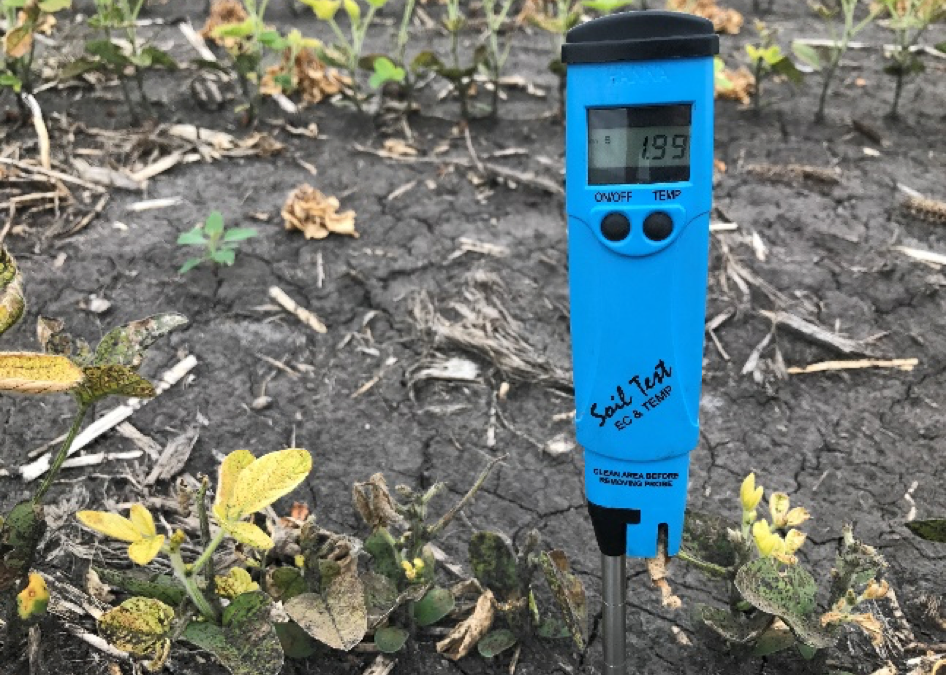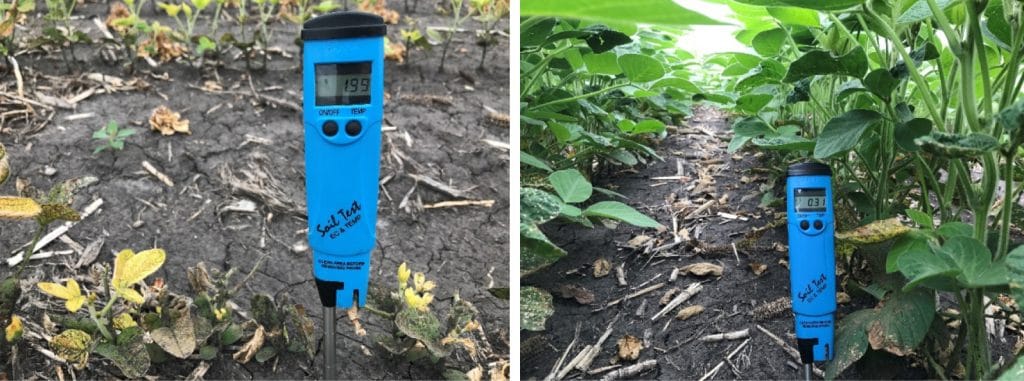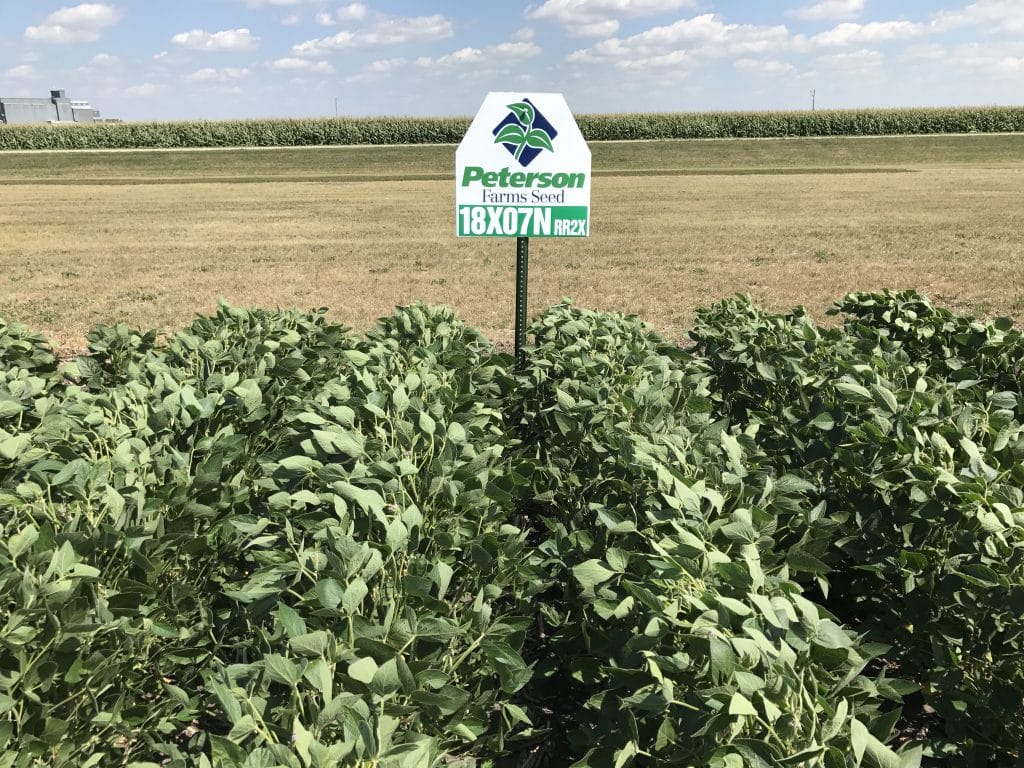Reduce IDC Exposure in 2018 With The Correct Genetics

Iron Deficiency Chlorosis (IDC) was at its worst during the 2017 growing season. It was one of the most severe outbreaks I’ve seen in my 25 years in production agriculture. There were a number of contributing factors, but in my mind, the agronomic conditions of the previous 2016 season set-up our 2017 soybeans for this disease.
2016 Weather
The higher-than-normal rainfall received in 2016, especially in the northern Red River Valley, led to high water table levels, pushing ground salts close to the surface. The drier conditions this past season did not allow for those salts to be flushed and pushed lower into the soil profile. Instead, those salts remained at higher than normal levels right in the soybean root zone.
I tested many soils this past summer with much higher-than-average salt levels. A good IDC tolerant (not resistant) soybean can handle salts up to nearly 1.25 mmho/cm. I tested more than a few IDC-affected areas this summer with results ranging from 1.75 to over 4 mmho/cm. This high of a result makes it evident that the damage is a result of salts near the root zone.
2017 Weather
While the 2016 weather conditions set last summer’s crop up for IDC problems, not all of the blame can be placed there as 2017 had weather that also contributed. Last May’s cool growing conditions didn’t push soybean development along as needed. And the last half of June’s cooler-than-normal temps coincided with our typical POST herbicide applications.
And due to weed resistance management, many growers added additional products into their herbicide mixes for the soybean plant to metabolize. Soybeans show additional stress when affected by this combination of cool weather, salts, and herbicide. It was a perfect storm for IDC.
Higher Nitrogen Levels
I also noticed higher than normal carryover Nitrogen levels in the soil. In 2016, we had great corn and wheat yields, due in part to high soil mineralization. Much of this Nitrogen was utilized by the crop resulting in the higher yields. But there was an abundance in some fields leading to levels over 80 lbs/A of carryover Nitrogen.
Scientists that conduct IDC trials typically apply some Nitrogen to enhance the effects of IDC. The uptake of Nitrogen affects the iron the plant requires to utilize the Nitrogen. This Nitrogen effect is the reason we see green wheel tracks in fields. The Nitrogen in the compressed soil of the wheel track denitrifies easier, and the N level is reduced.
Don’t Blame the Trait
I heard more than a few farmers blame the new RR2 Xtend trait for the IDC problems they experienced. Since it was the first time they had tried Xtend and the IDC problem happened that same year, Xtend seemed to be the likely culprit. However, the trait cannot be responsible. A plant’s genetics are similar to human genetics, in that a person’s genetic profile plays an important part in our predisposition to disease. IDC tolerance levels are completely dependent on variety genetics not trait.
Preventing IDC Problems Next Year
So how can you reduce your IDC exposure in the next crop? The only way is to select soybean varieties with high IDC tolerance.
After careful screening of the varieties in our lineup, I’m fully confident our IDC ratings have merit. I am certain that our products, including the RR2 Xtend varieties listed with good IDC tolerance in our Product Guide, offer excellent choices for tough IDC soils.
Trusted ratings and confident offerings may not be the case with other companies. But that should not give the RR2 Xtend trait a black eye. Blame the variety. Not the trait.
My biggest piece of advice to ensure successful variety selection, IDC troubles or not? Work with a trusted seed dealer on placing the correct variety on the right soil. Soil test your fields for the true IDC indicators: salts and Calcium carbonates. IDC will not appear in low pH soils, but it doesn’t always occur in higher pH soils, either. Applications of a good seed-applied iron product like SoyGreen can help to encourage greener soybeans as well.













